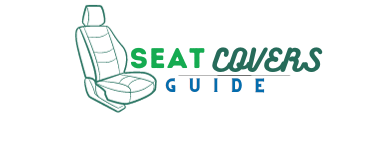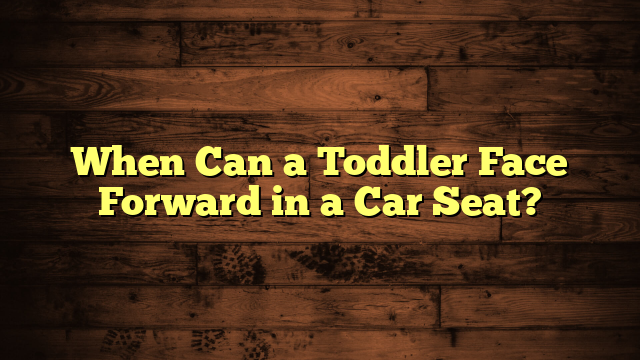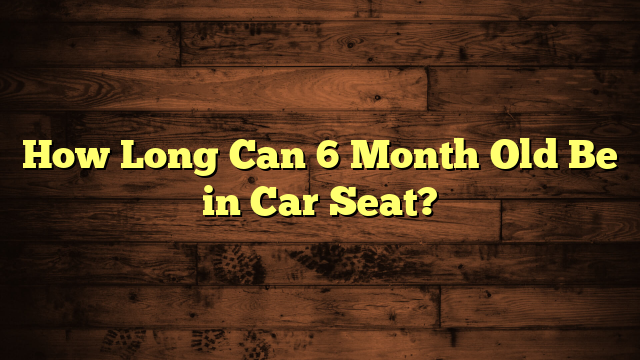Can I Feed My Baby in a Car Seat?
Did you know that approximately 3,000 children are treated for choking each year, with many incidents occurring during feeding? While the convenience of feeding your baby in a car seat might be tempting, it's essential to contemplate the safety implications. Pediatricians strongly advise against this practice for various reasons, which might make you rethink your approach. So, what are the safer alternatives that guarantee both your baby's nutrition and well-being while on the go?
Key Takeaways
- Feeding a baby in a car seat increases the risk of choking due to distractions and improper positioning.
- Pediatricians advise against feeding in car seats, emphasizing the importance of supervision to prevent accidents.
- Feeding while traveling can compromise the baby's airway and hinder proper swallowing due to limited head and neck support.
- Safer alternatives include stopping for feeding, using portable highchairs, or picnic blankets for a more supportive environment.
- Many parents are unaware of the risks associated with feeding in car seats, leading to increased incidents of choking and accidents.
Safety Concerns of Feeding in a Car Seat
Feeding your baby in a car seat may seem convenient, but it raises significant safety concerns. While you might think your little one is secure, the car seat design isn't meant for feeding. In fact, this practice can increase the risk of choking, especially if your baby is distracted or moves unexpectedly.
When you're on the go, it's vital to prioritize safety measures that protect your child. Additionally, car seats are designed primarily for travel, not for mealtime. Feeding in a car seat can lead to improper positioning, which may obstruct their airway.
It's important to keep your baby upright and supported while they eat, something that's hard to achieve in a car seat. If you must feed your baby during travel, consider stopping at a safe location, like a rest area, where you can help them sit up properly.
Always remember, your baby's safety comes first. Take the time to verify they're in
Benefits of Feeding on the Go
When you're out and about, having the ability to feed your baby on the go can be a lifesaver. The convenience factor of feeding in a car seat means you can keep your little one satisfied without having to stop every time hunger strikes.
Whether you're running errands or traveling, this flexibility allows you to maintain your schedule while ensuring your baby gets the nourishment they need.
Additionally, feeding your baby in a car seat can enhance baby bonding. The close proximity during feeding creates moments of connection, even in a busy environment. You can engage in gentle conversation, eye contact, and soft touches, all of which help strengthen your emotional connection.
This bonding experience is invaluable, especially during the early months when nurturing trust and attachment is essential.
Moreover, being able to feed on the go reduces stress for both you and your baby. You won't have to worry about finding a suitable place to stop, and your baby will remain comfortable in their familiar car seat.
All these aspects make feeding on the go not only practical but also beneficial for nurturing that special bond between you and your little one.
Recommended Practices for Feeding
To guarantee a smooth feeding experience in a car seat, it's important to follow some recommended practices.
First, choose appropriate feeding techniques to make the process easier. If you're bottle-feeding, select a bottle that allows your baby to feed comfortably without straining their neck. For breastfeeding, consider using a nursing cover for privacy and ease.
When it comes to travel snacks, opt for easy-to-eat options that your baby can handle. Soft fruits, small pieces of cheese, or baby puffs are great choices. Always confirm the snacks are safe and appropriate for your baby's age and development.
Keep your baby in an upright position while feeding, as this helps with digestion and reduces the risk of choking. Take breaks during longer trips to check on your little one and give them a chance to stretch.
Finally, stay calm and focused. If you find yourself feeling rushed, it might be better to stop for a proper feeding break instead.
Risks of Feeding While Driving
Attempting to feed your baby while driving poses significant risks that can't be overlooked.
First and foremost, your focus should be on the road, not on managing a bottle or spoon. Feeding distractions can make you less aware of your surroundings, increasing the chances of accidents. Even a momentary lapse in attention can lead to devastating consequences.
Furthermore, car seat safety is paramount. When you're preoccupied with feeding, you mightn't notice if your baby's car seat isn't properly secured. An improperly installed car seat can lead to serious injuries in the event of a sudden stop or collision.
There's also the risk of choking. If your baby's feeding isn't closely monitored, it can quickly become a dangerous situation. Babies can be unpredictable eaters, and the last thing you want is to deal with choking while driving.
Ultimately, your priority should be the safety of both you and your baby. The car isn't the ideal environment for feeding, as it compromises your ability to drive safely.
Consider stopping in a safe location to guarantee both you and your baby can focus on the task at hand.
Alternatives to Feeding in a Car Seat
Finding safer alternatives to feeding your baby while on the go can make a big difference for both of you. Instead of using a car seat, consider using portable highchairs or designated feeding areas. This way, you can guarantee your baby is properly supported and comfortable during mealtime.
Here's a quick comparison of options for feeding your baby while traveling:
| Feeding Option | Pros | Cons |
|---|---|---|
| Portable Highchair | Easy to set up, safe support | May be bulky to carry |
| Travel-Friendly Meals | Convenient, less mess | Requires planning ahead |
| Picnic Blanket | Flexible location, easy clean-up | No highchair support |
| Baby Carrier Feeding | Hands-free, soothing for baby | Limited space for messy meals |
Travel-friendly meals, such as pureed pouches or finger foods, can make mealtime easier. Opt for options that require minimal setup and cleanup, making your outings less stressful. Remember, a calm and safe feeding environment can enhance your baby's eating experience, so plan ahead for a smoother adventure.
Expert Opinions on Car Seat Feeding
Experts widely caution against feeding babies in car seats due to safety and health concerns. While it may seem convenient, it poses significant risks to your child's well-being.
For instance, improperly supported feeding can lead to choking hazards and ineffective feeding positions.
Here are some key points to take into account about car seat safety and infant feeding:
- Choking Risks: Babies can easily choke if they're in a reclined position and not properly supported during feeding.
- Digestive Issues: Feeding in a car seat may lead to discomfort or reflux as the baby's position isn't ideal for digestion.
- Distraction: Babies can become distracted by their surroundings, making it harder for them to focus on feeding.
Experts recommend that you find a safe, stable surface for feeding your baby to guarantee they're comfortable and secure.
Prioritizing car seat safety not only protects your child during travel but also supports healthy feeding practices.
If you need to feed while on the go, think about pulling over to a safe location and using a flat surface to create a better feeding environment.
Tips for Safe Feeding Experiences
When you're on the move and need to feed your baby, guaranteeing a safe feeding experience is essential. Start by practicing proper feeding techniques that minimize risks. Hold the bottle or spoon at a slight angle to prevent choking, and always supervise your baby while they eat.
If your little one is in a car seat, make sure it's properly secured. Never attempt to feed your baby while the car is moving; this can compromise both car seat safety and your child's well-being.
It's also wise to choose the right time for feeding. If you know you'll be on a long drive, plan breaks where you can safely take your baby out of the car seat for feeding. This not only promotes bonding but also guarantees your baby is comfortable and safe during meals.
Always keep a few essentials on hand, like bibs and wipes, to manage any mess.
Finally, stay calm and patient; feeding can be a bit tricky in a car seat, but with the right approach, you can create a positive experience for both you and your baby. Prioritize safety, and enjoy those special feeding moments!
Frequently Asked Questions
Can I Use a Bottle Holder While Feeding in a Car Seat?
Using a bottle holder while feeding in a car seat isn't recommended. It can compromise bottle safety and car seat stability, increasing the risk of spills or accidents. Always hold the bottle securely for your baby's safety.
What Age Is Safe for Feeding in a Car Seat?
When it comes to feeding, safety's your priority. Generally, experts suggest waiting until your baby can sit unassisted—around six months. Always follow feeding guidelines and safety recommendations to guarantee your little one's well-being.
How Can I Prevent Spills While Feeding in a Car Seat?
To prevent spills while feeding, use spill-proof solutions like silicone bibs and snack containers. Feeding accessories such as travel-friendly sippy cups can help keep messes minimal, ensuring a smoother experience for both you and your baby.
Are There Specific Foods Recommended for Car Seat Feeding?
When you're on the go, think of baby-friendly snacks like cut-up bananas or soft avocado. Travel meal ideas can include yogurt pouches or teething biscuits, keeping your little one satisfied without too much mess.
Can Feeding in a Car Seat Affect My Baby's Sleep?
Feeding your baby in a car seat can disrupt sleep patterns. When they're reclined, it might affect car seat safety, making it harder for them to settle into a restful sleep when not in motion.
Conclusion
Feeding your baby in a car seat might seem like a time-saver, but it's like juggling flaming torches while riding a unicycle—exciting, yet incredibly dangerous! The risks of choking and improper positioning are simply not worth it. Instead, take the extra moment to find a safe spot for feeding. You'll not only protect your little one but also create a more enjoyable mealtime experience. Prioritize safety, and your baby's feeding adventures will be much more rewarding!
- Can I Get in a Taxi Without a Car Seat? - January 26, 2025
- Can I Get Chlamydia From a Toilet Seat? - January 26, 2025
- Can I Get an Uber With a Car Seat? - January 26, 2025






